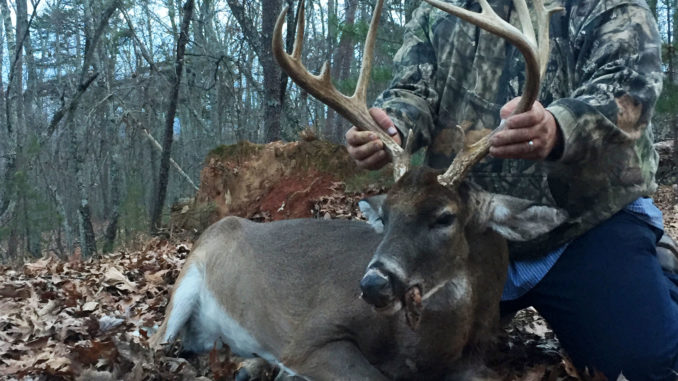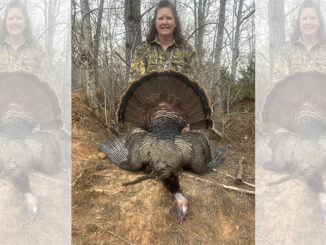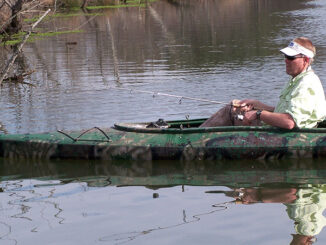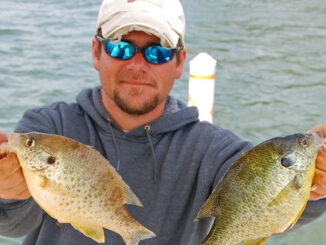
What does this fall’s deer season have for hunters in the Carolinas? New regulations for much of North Carolina, a second year to look at how South Carolina hunters are reacting to changes from 2017. But make no mistake, the deer are still there for the t
If you haven’t started thinking about deer hunting yet, you’re already way behind.
South Carolina hunters in about 25 percent of the state get to bring out their archery equipment on Aug. 15, the same day hunters in another 25 percent of the state will be carrying their bean field rifles to their deer stands.
North Carolina bowhunters get the first crack at any Tarheel State deer, but not until Sept. 8, when archery season arrives statewide.
But with trail cameras, food plots and deer feeders to maintain or get going, plenty of hunters are already well into the mental side of things, wondering where to set up their stands for opening day, and what their goals should be for the season.
• How many bucks is enough? Are we looking for big deer or big numbers?
• How many does should be tagged to keep the herd in line?
• What should I shoot, and when?
Both Carolinas had increases in the deer harvest between 2016 and 2017. North Carolina hunters killed 161,854 deer last season, an increase of 8 percent over 2016 levels. Two interesting notes: the harvest in the Southeastern section was up 13.3 percent; the harvest in the Northeastern section was down 4 percent.
In South Carolina, hunters took 185,286 deer last season, a 7-percent increase over 2016 levels. With more-restricted buck harvest limits in effect, most of the overall increase was powered by a 12-percent increase in the number of antlerless deer killed.
But Charles Ruth, the deer project leader for the S.C. Department of Natural Resources said plenty of factors probably contributed to the increase, which ended a series of harvest decreases dating back to 2002, when the record harvest was better than 300,000 deer.
“We expected a little bump in the harvest last year because of conditions in 2015 and 2016,” he said. “I would guess that we left some deer in the woods because of the flood in 2015 and the hurricane in 2016 that would have been harvested under better conditions, and they were harvested last fall.”
Ruth doesn’t expect any big differences in where and when hunters take deer this fall, nor how many. But he said he and other biologists will be monitoring details of this fall’s harvest — and the next two or three seasons — to see if the more-restrictive buck limits instituted in time for the 2017-18 season are having an impact on what hunters are tagging.
“Most of the increase we had (in 2017) was related to the doe harvest,” Ruth said. “Maybe that’s an indication that the buck limits are working at some level, but it will take a few years to really determine that. It will take at least three years or more before we’ll be sure about it. I don’t think the increase we saw last year was enough to predict how it will set up in the next few years, but we have that big question to answer: Are we actually, with the limits, are we going to save some bucks?”
Ruth wonders aloud whether or not last year’s increase was just a one-season wonder, or if South Carolina’s deer herd is on the increase.
“This is anecdotal, but I’m starting to talk to more people who say they are seeing more deer than they have been in recent years,” he said. “And one thing we highlighted in our deer report (www.dnr.sc.gov/wildlife/deer/2017DeerHarvestReport.html) was that the coyote harvest was down last fall. Has our coyote population finally hit the wall and is no longer increasing? Is that affecting our deer population?”
As far as where to hunt in the Palmetto State, nothing has really changed. The same handful of counties is spitting out the most deer every season, and some of the same counties are spitting out the biggest number of trophy bucks.
Hunters in Orangeburg, Hampton, Colleton and Williamsburg all killed better than 7,000 deer last season. Hunters in Anderson, Bamberg and Hampton counties killed the highest number of deer per square mile, and Orangeburg, Aiken and Anderson counties continue to fill up the South Carolina deer record book with the most entries.
North Carolina hunters will have plenty to think about this season. Those in the eastern half of the state are facing a season limit of two antlered bucks for the first time ever, thanks to regulation changes in the offseason.
The N.C. Wildlife Resources Commission divided the eastern third of the state into two management regions: Northeastern and Southeastern, but seasons and bag limits are the same in both regions this fall. The statewide limit on antlerless deer is four, with bonus tags only allowed during Urban Archery seasons in specified locations.
Rutherford, Polk and Cleveland counties were moved from the Western to the Northwest section, and in those three counties — plus the remainder of the Western section — antlerless seasons of various lengths will move from the end of gun season to the beginning.
Last season, North Carolina hunters tagged 161,854 deer, an 8-percent increase over the previous season, a harvest made up of 52-percent bucks and 41-percent does.
John Shaw, the deer-project leader for the N.C. Wildlife Resources Commission, said the changes were responses to trends noticed in harvests over the past decade.
“Generally speaking, we’ve seen declines in the deer harvest in the eastern half of the state for about a decade,” he said. “The harvst has been fairly stable in the Central section and the Northwestern zone, and in the Western zone, we’ve seen some pretty strong increases in harvest trends, mostly on private lands. We may be reaching a point where deer numbers start making some exponential gains in some western areas.”
In the eastern third of the state, however, things may be headed in the other direction.
“We have encouraged doe harvests for decades, and maybe we’ve gotten on top of the herd,” he said.
Shaw said the two-buck rule in the eastern half of the state is half of a Commission goal.
“The two-buck limit is designed to help balance the sex-ratio in the eastern part of the state, and the age structure in our bucks,” he said. “But the timing of the (doe) harvest is just as important. We want to have that balanced sex ratio in the herd going into the breeding season. We want to shoot them earlier. That can have a tremendous impact on concentrating the timing of breeding and fawning activities.”
Eliminating bonus antlerless tags — except in areas with an Urban Deer Season — is a recognition that hunters have gotten control of the statewide deer herd. Limiting hunters to four antlerless deer per season is another step in that direction.”
“We believe that’s going to help stabilize our deer numbers in some places” Shaw said. “All we can look at is past trends, because it’s hard to predict the future. Things can change.”
Statistically, hunters are killing deer just about everywhere in the eastern two-thirds of North Carolina. Top counties the traditional Roanoke River counties, Northampton, Halifax amd Bertoe, but top harvests also came last year from counties in the southern Piedmont (Anson, Randolph, Union), the northern Piedmont (Rockingham, Stokes) and Wilkes County in the northwestern mountains.
Counties in the northern Piedmont continue to dominate the honor roll kept by the Wake County Wildlife Club of trophy bucks scored at the annual Dixie Deer Classic. Multiple Boone & Crockett bucks have been taken from Rockingham, Person, Guilford and Caswell counties, most of them since the two-buck rule was instituted in the western half of the state in 2000.









Be the first to comment